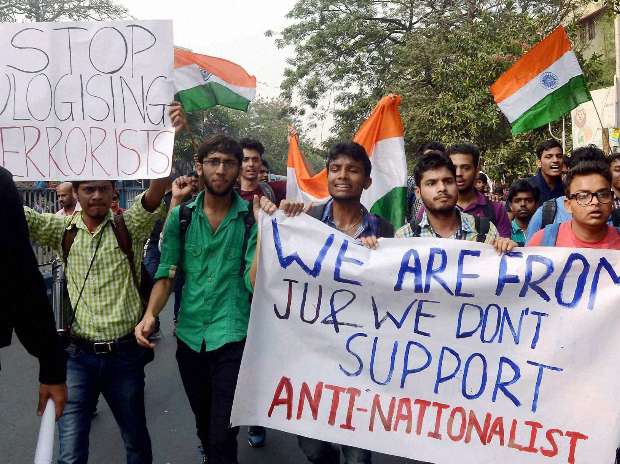A number of things have happened in our country in 2016. Things that should dominate the public discourse, and make the people of the country take their ruling class to task. A botched anti-terrorist operation in Pathankot, a drought that threatens to turn into a famine and a severe lack of industrial growth have all had their moments of spotlight in the sun of the media’s glare, but the most consistently eye-pulling story has been the events unfolding on India’s campuses. From the IIT’s to JNU, from Kolkata to Pune and Srinagar to Chennai, the authorities and the students seem to be at cross-purposes, with accusations and counter-accusations flying about faster than Lewis Hamilton in his race car.
In a way, it reflects the broader divisions and uprising of sentiments across the country. The college-going phase tends to be one of political awakening; it is when a youth of India start to align themselves with a certain ideology. Among the younger generation and especially students of liberal arts, the tendency is to identify more with a socialist ideology, tending towards communist sympathy, and in that lies the root of the current strife.
It is no one’s case that India’s two major political parties provide a match-up between good and bad. By virtue of our history and the circumstances of colonisation, our political class is often venal and corrupt, with a rich vein of hypocrisy that seems inexhaustible. But while the previous government’s actions were perhaps no better than the present one, it must be conceded that the quality of rhetoric and political positioning of the NDA government has favoured a majoritarian capitalist outlook which has raised strong apprehensions among the class of people who have a different view of what ‘development’ might mean.
The first sparks were lit around a year ago, when, on the recommendation of a minister in the NDA government, the ‘Ambedkar-Periyar’ study circle was banned and action taken against the dozen or so students who were a part of it. The charge against them was somewhat vague, as they were accused of harbouring ‘anti-national’ sentiments and impugning the dignity of ‘the Prime Minister of the country, and Hindus’.
This was followed by the appointment of Gajendra Chauhan as chairman of the FTII, an institution that has produced some of India’s best film-makers in the past. Compared to previous holders of the post, Mr. Chauhan’s credentials for holding the post were thought to be rather weak. A number of students went on ‘strike’ – which might be considered laughable by those who believe FTII students don’t do much studying anyway, but was a symbolically significant gesture nonetheless.
From here the scene of action shifted to a much more serious matter, with the suicide of Rohith Vemula, a student in University of Hyderabad, apparently as a result of discrimination faced by him and the cancellation of his scholarship.The response of the government however was heavy-handed and raised more questions than it answered, leading to a sense of victimhood and disquiet among students, not just at the University, but all over the country.

The final straw was the massive flare-up at Jawaharlal Nehru University, which despite its name is closely associated with a leftist ideology. The details of what happened will always be buried in allegation of doctored videos and shouted slogans, but what began as a protest meeting was alleged to be an act of sedition against the Indian state and in the full spotlight of the national news media (it helps that JNU is within a few kilometres of all TV channel offices). Too much has been written around that issue for me to be able to add anything very meaningful.
From there to the troubles at Jadavpur University and at NIT Sringar, as well as campuses in Pune and Lucknow, the fires seem to have spread. Suspensions, fines and rustications have been met with defiance and counter-petitions. Naturally, with many opposition parties seeing these events as an opportunity to embarrass the party in power, funding and support to keep this anger alive has not been lacking.
The flames have been fanned in equal parts by inept handling by the authorities and political manoeuvring by the opposition. In the midst of all this, it is the education process that will suffer, as discourse will shift from genuine reform to nationalism, flag waving and food habits on campus – all of which are irrelevant to the larger problems facing education in India. Else this fire, the result of discontent and inept handling, a fire kept burning by vested interests and a polarised media, is in danger of spreading, and engulfing the state altogether.































